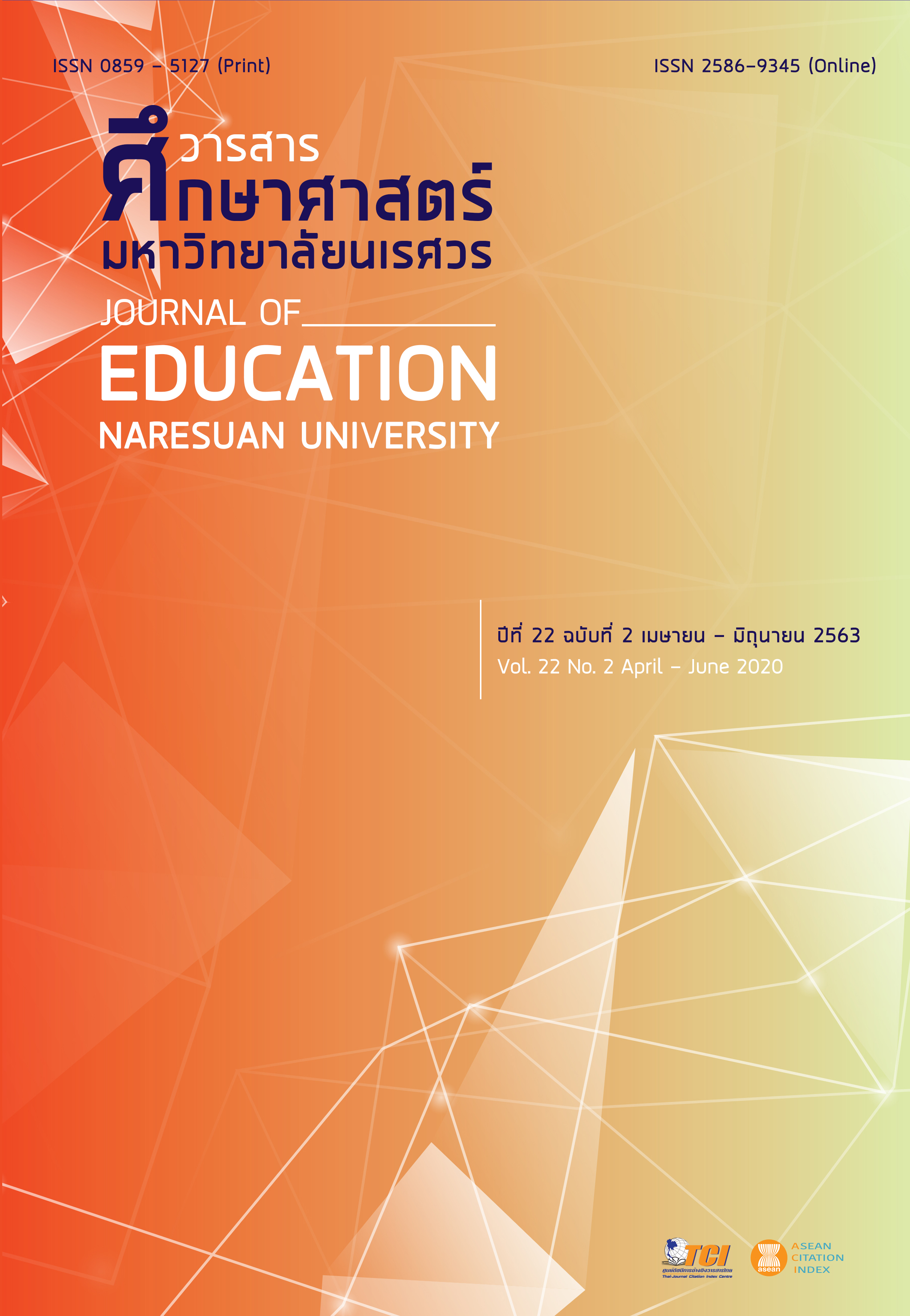THE DEVELOPMENT OF SCIENCE STUDENT TEACHERS’ STEM LITERACY THROUGH THE COMMUNITY PARTICIPATION COMBINED WITH LOCAL RESOURCE STEM EDUCATION CAMP IN SURAT THANI
Main Article Content
Abstract
Science student teachers’ STEM (Science, Technology, Engineering, and Mathematics) literacy must be improved for their professional development and to enable them to apply this basic knowledge in instructional STEM education. This study investigates ways to promote science student teachers’ STEM literacy and identifies the effect of STEM literacy development through community participation combined with a STEM camp in a locality in Surat Thani. The study participants were 64 fourth-year science student teachers who were selected purposively from the first semester of academic year 2017–2018 at a teacher training institute in Southern Thailand. This study is aimed at research and development (R & D) in this area. Multiple data sources including STEM classroom observations, interviews, and document analyses were used. Data were analyzed and categorized using content analysis through an inductive process. The study findings indicated that focusing on real-life contextual situations, engineering design process practices, hands-on activities, team work, use of technology to solve problems, reflection, STEM lesson plan design, and STEM teaching practice can improve science student teachers' STEM literacy. Furthermore, their holistic STEM literacy can be increased from a medium level to a high level. Most science student teachers could well apply self-knowledge in the fields of science, mathematics, and technology to engineering design processes to solve problems and innovate. They could also apply their STEM disciplinary knowledge to instructional STEM education.
Article Details
The owner of the article does not copy or violate any of its copyright. If any copyright infringement occurs or prosecution, in any case, the Editorial Board is not involved in all the rights to the owner of the article to be performed.
References
Arshavsky, N., Edmunds, J., Charles, K., & Rice, O. (2012). STEM classroom observation protocol training manual. Greensboro, NC: The SERVE Center, University of North Carolina at Greensboro.
Bybee, R. W. (2013). The case for STEM education, challenges and opportunities. Arlington, VA: National Science Teacher Association Press.
Chulavatnatol, M. (2012). Science, technology, engineering and mathematics education (STEM education: The conceptual framework document (December 29, 2012 Draft Version). [in Thai]
English, L. D, & King, D, T. (2015). STEM learning through engineering design: Fourth-grade students’ investigations in aerospace. International Journal of STEM Education, 2(14), 1-18.
Evans, M. A., Schnittka, C., Jones, B. D., & Brandt, C. B. (2016). Studio STEM: A model to enhance integrative STEM literacy through engineering design. In Annetta, L. A., & Minogue, J. (Eds.), Connecting Science and Engineering Education Practices in Meaningful Ways, Contemporary Trends and Issues in Science Education (pp. 107-135). Switzerland: Springer International Publishing.
Grbich, C. (2007). Qualitative data analysis: An introduction. Thousand Oaks, CA: Sage.
Israsenaayth, V. (2017). Fascinating story about STEM education (2nd ed.). Bangkok: Chulalongkorn University Press. [in Thai]
Kijkuakul, S. (2015). STEM education. Journal of Education Naresuan University, 17(2), 201-207. [in Thai]
Lederman, N. G., & Lederman, J. S. (2013). Is it STEM or “S & M” that we truly love? Journal of Science Teacher Education, 24(8), 1237-1240.
National Research Council. (2012). A framework for K-12 science education: Practices, crosscutting concepts, and core ideas. Washington, DC: National Academies Press.
Nugent, G., Barker, B., Grandgenett, N., & Adamchuk, V. I. (2010). Impact of robotics and geospatial technology interventions on youth STEM learning and attitudes. Journal of Research on Technology in Education, 42(4), 391–408.
O’Neill, T., Yamagata, L., Yamakata, J., & Togioka, S. (2012). Teaching STEM means teacher learning. Phi Delta Kappan, 94(1), 36-40
Rinke, C. R., Gladstone-Brown, W., Kinlaw, C. R., & Cappiello, J. (2016). Characterizing STEM teacher education: affordances and constraints of explicit STEM preparation for elementary teachers. School Science and Mathematics, 116(6), 300-309.
Sangkharak, A., Prasitpong, S., & Wichaidit, S. (2017). STEM education learning of photosynthesis to promote engineering design process of grade 11 students. Journal of Education Prince of Songkla University, 28(3), 59-71. [in Thai]
Siripatharachai, P. (2013). STEM education and 21st century skills development. Executive Journal, 33(2), 49-56. [in Thai]
STEM Education Thailand. (2014). Why is STEM education? Retrieved April 21, 2014, from http://www.stemedthailand.org [in Thai]
Tongchai, A. (2016). The importance of engineering in science learning management in the 21st century. Kasetsart Educational Review, 31(3), 48-53. [in Thai]
Tsai, H., Chung, C., & Lou, S. (2018). Construction and development of iSTEM learning model. EURASIA Journal of Mathematics, Science and Technology Education, 14(1), 15-35.
Zollman, A. (2012). Learning for STEM literacy: STEM literacy for learning. School Science and Mathematics, 112(1), 12-19.


